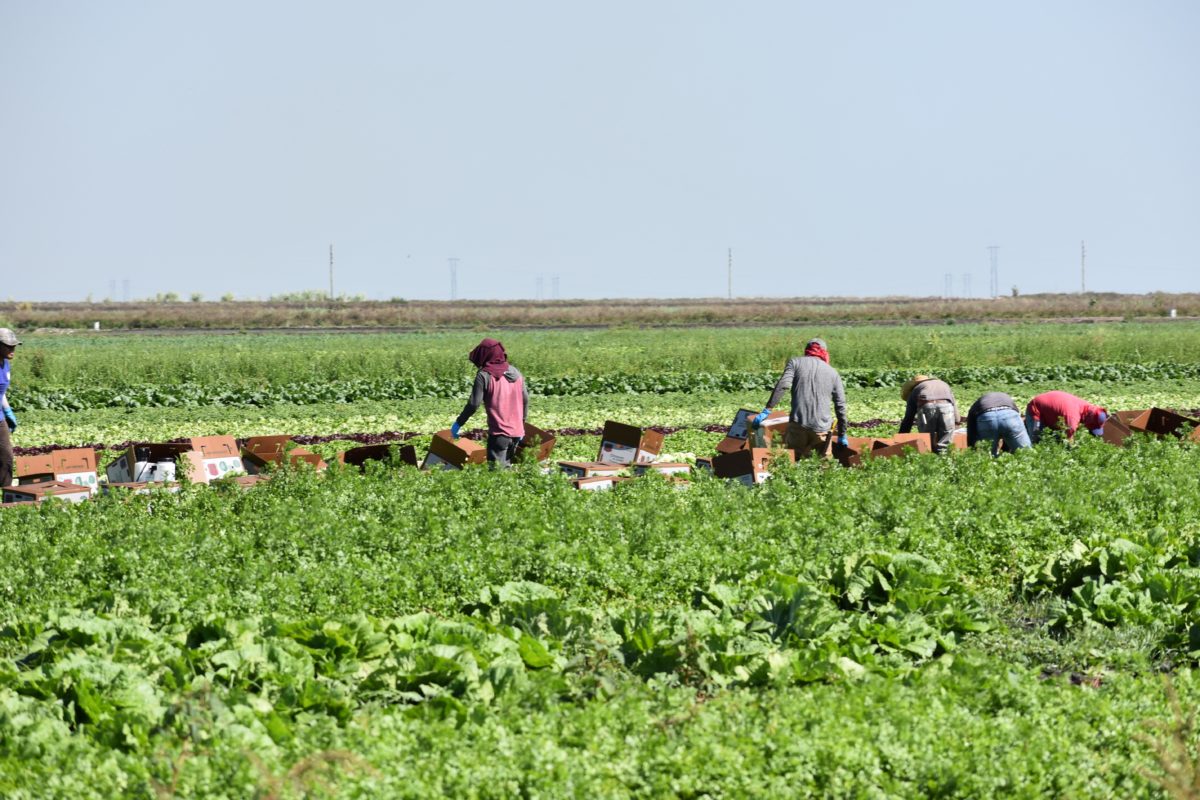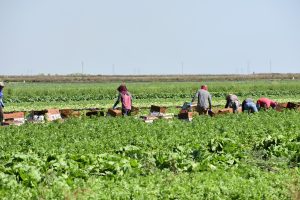Farms across the United States have been struggling for a number of years now to find and retain the amount of agricultural labor that is required for their operations. Many growers have switched to crops that can be mechanically harvested or simply require less labor. For the farmers who do not have that option, or remain dedicated to the crops they grow, using H-2A workers is becoming more necessary. One option that is helping some growers transition into an H-2A workforce is using a farm labor contractor.
“We didn’t have a choice. We had to look toward that program,” said Pete Aiello, co-owner and general manager of Uesugi Farms. “We decided that it really wasn’t that bad when you have a good, reputable contractor handling it for you, that’s going to take care of all the stuff and make sure you have the workers that you need.”
A common concern regarding the H-2A program is the cost associated with the requirements. California growers have been especially hesitant to embrace the program because of the high cost and limited availability of appropriate land to construct the necessary housing. In a California Farm Bureau Federation labor survey last year, only 3 percent noted using the H-2A program, with many citing the cost and overall burden inherent with the program as reasons they did not use it.
Uesugi Farms is a diversified operation with 5,000 acres spread throughout California, Arizona and Mexico. Aiello said that the shortage of reliable labor finally forced his hand in giving the H-2A program a chance. “It’s been an ongoing problem for several years now, but it’s become severely dire in the last, I’d say three years … It’s gotten to a point to where our business does not have a sustainable model with the labor we were using before, right up until the end of last year,” said Aiello.
START SLOWLY WITH A TRIAL RUN
The acceptance of using an H-2A workforce by way of a labor contractor was an incremental process for Uesugi Farms. Aiello said the farm opted for a small trial run with H-2A laborers in order to learn more about the process and make sure that it was a viable option to implement on a broad scale throughout the operation. “It was a small sample size, but large enough to give us a comfort level with it that we, to that point, did not have,” Aiello noted.
Just three years ago, Aiello said there would have been no way the business would be dealing with H-2A workers, but that viewpoint changed after having a positive experience with the initial trial of working with a labor contractor. “We did see that it worked, and we knew that this contractor can get it done for us. We have a lot of trust and faith in them, and our relationship has become even stronger over the last few months as we’ve gone through this application process,” said Aiello.
Using a labor contractor can be a costly endeavor, but it makes the use of the H-2A program much easier for farmers and relieves them of many of the responsibilities of the program’s requirements. The labor contractors are accountable for the requirements of the program such as transportation, housing and the needed documentation.
The U.S. Department of Labor has been tracking the use of H-2A workers and found that growth has been significant over the past seven years. The number of H-2A worker certifications that have been issued has more than doubled since 2006. In 2016, Florida, Georgia, North Carolina, Washington and California employed nearly half of all the H-2A laborers that were working in the country.
SKILLED LABOR WORTH THE INVESTMENT
In the case of Uesugi Farms, growing a variety of produce such as bell peppers, cabbage, sweet corn and strawberries can require a range of skillsets that are necessary for the workforce to possess. So far, the abilities of the H-2A workers have surpassed expectations and set a new standard for other employees on the farm.
“In some cases, these guys were outworking our other crews three-to-one; in a lot of cases, two-to-one. It’s just really refreshing to see these folks get in there and roll their sleeves up and do these very difficult jobs with a smile on their face and with a good attitude,” Aiello noted.
Using a labor contractor may be the best option available for small and mid-sized farming operations that may not have the necessary resources to navigate the requirements of the H-2A program themselves. The cost of a contractor can be a bit more expensive than local laborers, but it can help to ensure that a workforce is available when peak season hits and labor may be difficult to find.
“It makes sense to just hire a contractor. Find a good contractor, somebody that you like, that you trust, that has a proven track record and just let them handle it. Tell them what you need and let them run with it for you,” said Aiello. “That’s how we got to where we are today, where we’re expecting to cover our entire harvest with H-2A this year.”
This article was featured in the October issue of VSCNews magazine. To receive future issues of VSCNews magazine, click here.
Share this Post











